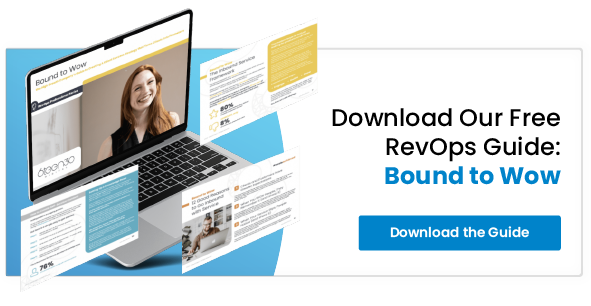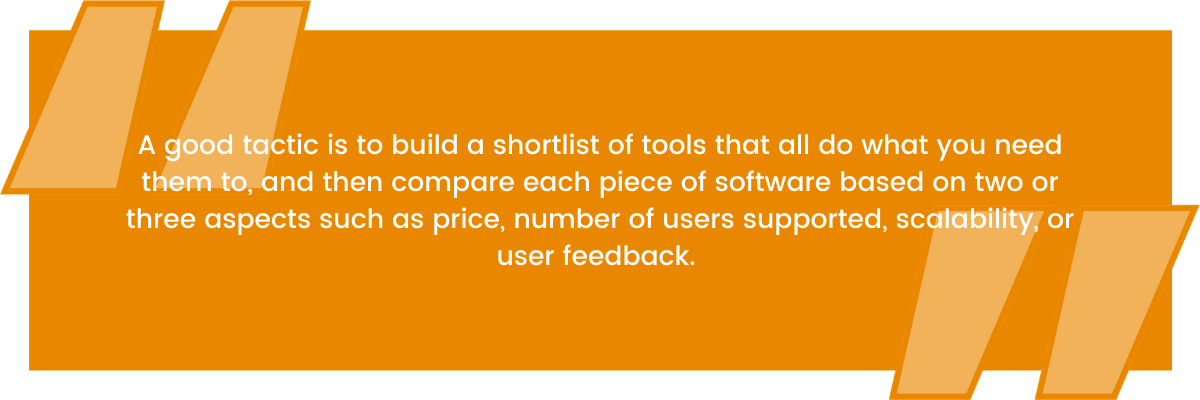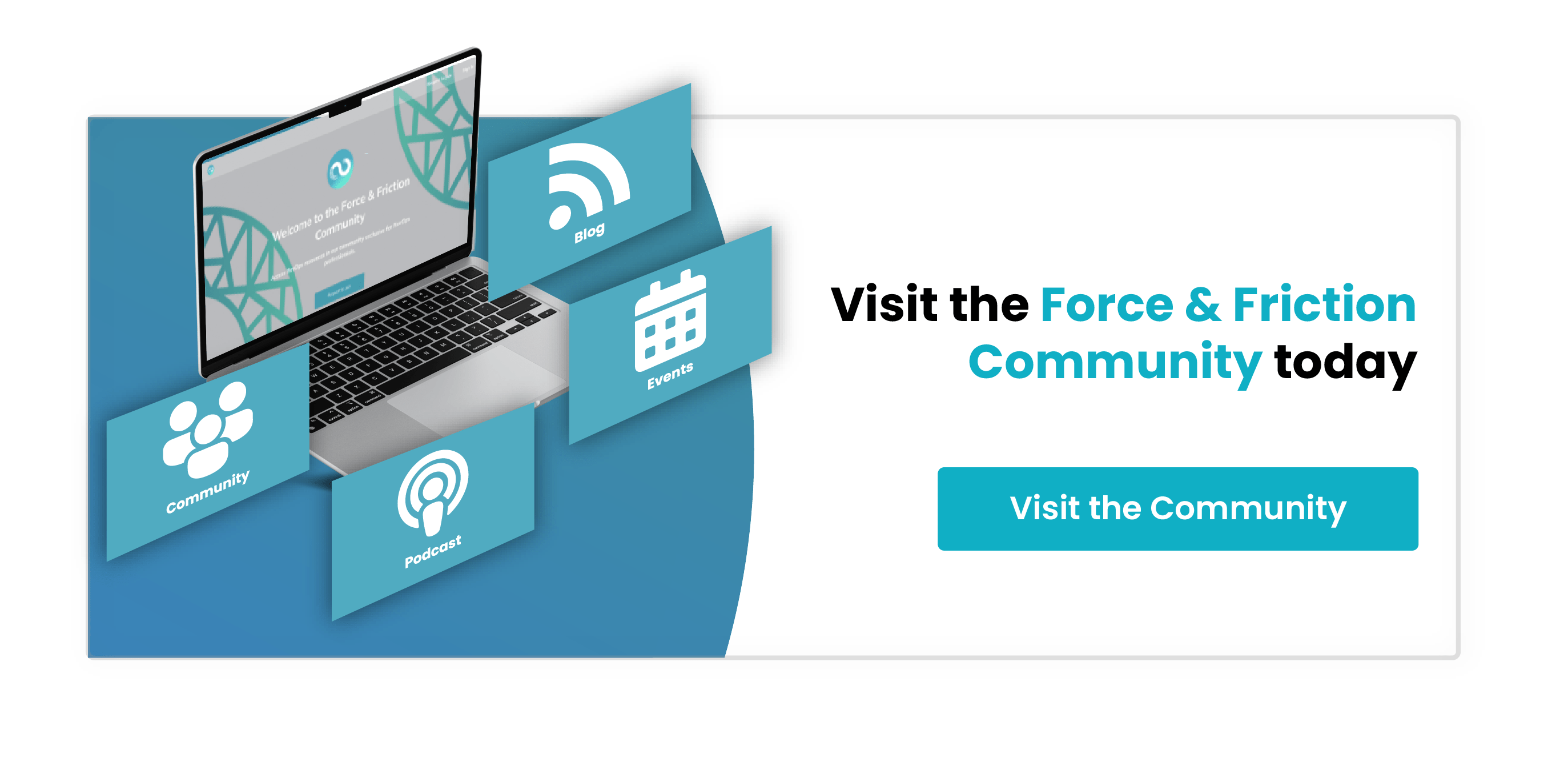
The Inbound Customer Success Framework For High Growth Service Companies: How to Onboard with WOW, Increase Customer Lifetime Value, & Create Raving Fans
High growth service companies haven’t reached their high growth status through a stroke of luck. They’ve achieved it by focusing on delighting their customers across each stage of their journey; they’ve kept their customers satisfied to a point where the company is generating a healthy recurring monthly revenue and generous profits.
But while delighting customers prior to closing a deal may be enough to generate revenue, it may not be enough to generate the long term relationships that will see that revenue staying strong further down the line. This is where inbound customer success strategies come into play, minimising churn rate, ensuring customers continue to derive full value from the services you offer, and ultimately turning customers into lifelong fans.
So how can you incorporate customer success into your organisational function? While the strategy you choose to implement must be customised to your own business needs, building an inbound customer success framework can help to lay the core foundations.
Understanding the Modern Customer
The way that customers behave is changing. This means that the way customers engage with businesses is changing, too. And a common situation that many service companies are currently finding themselves in is that they no longer have a full and clear picture of exactly who they’re working with. They don’t understand the modern customer, which makes it difficult - if not impossible - to generate customer success.
And so the first stage of building any inbound customer success framework must always be to gain a better understanding of exactly what the modern customer looks like; where they come from, where they search for information, what they want, how they interact, and so on. This provides the essential foundation needed for service companies to create a strategy that ultimately results in satisfied, long term end users.
For example, one of the biggest changes in customer behaviour that’s taking place right now is the emerging trend for customers to utilise multiple channels. Customers no longer interact with businesses through a single platform; they jump from channel to channel, which means that service companies should be working to identify best practices to engage the modern customer with multi-channel communication.
A further example is the fact that today’s customers are typically looking for ‘more’. While the services you offer may be very high quality and attractive - certainly enough to close the deal - they may not be enough to generate long term customer loyalty. And this can have a significant impact on your customer lifetime value. Today’s customers want to see value beyond core services; that’s what keeps them around.
At a time when customer behaviours are changing at such a rapid pace - partly driven by the ongoing and widespread shift to digital, and undoubtedly accelerated by the ‘new normal’ landscape - business leaders and customer success managers must ensure they’re putting themselves into positions where they are well placed to identify the long term shifts in customer behaviour, and adapt to meet the modern customer.
By understanding what today’s customers are looking for, and introducing strategies that enable you to better engage with the modern customer, you can give customers exactly what they need. Understanding the modern customer is key to delivering exceptional experiences; experiences that have the ‘wow’ factor; experiences that boost the customer lifetime value; experiences that ultimately create raving fans.
Mapping the New Customer Journey
The benefits of understanding the modern customer in terms of generating customer success are clear. What may not be quite so clear at this time is how to gain this understanding of the modern customer in the first place. While there are many potential techniques that can be used - such as asking customers for insight through surveys or feedback forms - one of the best ways is by mapping the customer journey.

When you take a look at how your customers behave - perhaps they enquire about your services but fail to respond to the information you provide, or maybe they invest a large amount of time into building a relationship with your sales team only to jump ship right before the sales handoff - it can be difficult to understand why. Mapping the customer journey can provide more insight into the motivation behind these decisions.
If you feel unsure about how to build a customer journey map, don’t worry. You are not alone. Many service companies struggle to map the customer journey, and the reason for this is that the customer journey is complicated; customers no longer take a standard set of steps to get from the top of the funnel to the bottom of the funnel. They do, however, typically move through the same stages of the decision making process.
Just like consumers, service company customers make decisions by moving right the way through from awareness to consideration to decision. They become aware of a need they have, they check out some potential solutions, and they select a partner. This provides an opportunity for service companies to breakdown the customer journey into three bite size chunks, analysing each stage to see how best to engage, and when.
For example, while you may feel that you’re providing adequate post-sales support through your website, a customer journey map could show that it’s here where your customers are struggling, and it’s here where they’re churning; they’re not finding what they want, so they’re going elsewhere. Insight such as this allows you to target your inbound efforts to address sticking points and facilitate a more seamless experience.

Identifying Customer Needs
Armed with an accurate and insightful map of the customer journey, service companies can gain a clearer image of which parts of the journey their customers are transitioning through seamlessly, and where sticking points are popping up. With a better understanding of sticking points, and of the gaps between what the business is offering and what customers are expecting, it’s easier to see how to bridge this gap.
Inbound customer success depends heavily on being able to give customers what they need to feel satisfied, both in their experience, and in the services they choose. And businesses will struggle to provide this if they don’t have a good grasp of what their customers need in order to feel this level of satisfaction. Your journey map should highlight areas where you’re not giving customers what they need to stick around.
For example, if the customer journey map shows that customers are identifying obstacles in post-sales service during discussions with your aftercare team, it may be worth looking into how to guide your customers to success with self service content that allows them to conduct their own research into any problems they are experiencing, find answers to their questions, and move forward on their own terms.
Similarly, if it looks as though you’re losing leads at the time of sales handoff, it’s a good idea to look at why; to question which needs aren’t being met at this particular part of the customer journey. It may be that a communication gap in the handoff process is resulting in customer insight loss, meaning that customer success teams are unable to onboard in the most effective way which can impact the overall customer experience.
Every service company will need to understand the needs of their customers before moving onto the next stage of the inbound customer success framework, as these needs will be used to shape the strategies that businesses implement. The inbound methodology works backwards; it starts from the end goal of the customer, and works backwards to providing services and experiences that meet the needs of the customer.
Implementing Strategies
Designing and developing the right inbound customer success strategy for you is one thing, but actually implementing that strategy is quite another. You’ll need to ensure you have the necessary tools and resources you need to properly support any process changes and new ways of working across the organisation, as well as any software that may be needed in order to create a successful experience for your end customers.
What many service companies don’t always realise is that there are many different types of customer success tools available. Some of these tools have been especially designed to generate success throughout each individual stage of the customer journey - awareness, consideration, and decision - so that customers are already on their way to becoming long term advocates by the time they’re handed off by sales.
Other tools have more of an internal effect, supporting the company itself as it introduces changes in a bid to create improved experiences for its customers. These tools may focus on aspects such as customer management, tracking inbound workflows and monitoring progress and impact, automating some of the more predictable tasks, or setting up a self-service education platform, for example.
There are also tools that do it all. Comprehensive solutions, such as the HubSpot Service Hub, are considered to be good all-rounders, allowing customer success teams to implement all aspects of their new strategies through a single interface. The HubSpot Service Hub is especially popular for companies already using the free HubSpot customer relationship management (CRM) tool because of the seamless integration.
It’s important to make the right decision for you. If you’re unsure, comparing customer service software can help.

This method should make it easier to find a solution that’s best for your company.
With the right technological infrastructure in place, you should be on the right track for implementing your customer success strategies in a way that brings the most value, and which really starts driving results. Supported by the right tools, and with an ability to keep track of your policies and processes, you should be able to onboard customers more efficiently, increase the customer lifetime value, and build a loyal customer base.

Tracking Success
When customer success strategies have been implemented, the most important thing is that these strategies are tracked, monitored, and adapted as needed to ensure that they are continually bringing value and helping to create a better experience for your customers; an experience that makes them want to stick around for the long term. Unfortunately, this is one part of the framework that businesses often tend to overlook.
One of the biggest mistakes that service companies are making today is that, while they may be switching their engagement approach towards the inbound methodology, they are still relying on outbound metrics for measuring success. For example, success may be measured by how many emails a sales rep sends. Or by how many phone calls they make. But these techniques don’t match the inbound way.
Consider the fact that your sales team could be hitting their quotas, reaching out as expected, and doing everything they should be doing. What does any of that matter if your customers aren’t happy? Inbound success shouldn’t be measured by output; it should be measured by an ability to build, nurture, and maintain valuable relationships that generate great experiences, create happiness, and have a long term impact.
Right now, service companies should be rethinking what success looks like. They should be measuring success based on customer satisfaction. Understanding customer satisfaction is key to generating a customer base that’s not only happy to be partnering with your organisation, but also willing to share their experiences and act as an advocate for your brand. And at the end of the day, that’s what you’re striving for.
There are a number of different metrics that can be taken into account here, and used to determine whether or not your strategies are delivering the desired results. These metrics include customer churn rate, monthly recurring revenue, customer lifetime value, customer retention cost, first contact resolution rate, and renewal rate. You can also measure customer success through simply asking for feedback from customers.
The importance of tracking customer satisfaction is that, as already discussed, customer behaviour is constantly evolving. While a specific approach might work for you right now, there are no guarantees that you can keep doing exactly what you’re doing and continue to generate customer success in the future. By tracking satisfaction, you can take proactive measures to tweak your approach so that it always keeps on delivering.
Onboarding with WOW
When inbound customer success strategies are implemented across the entire customer journey, your customers should already be feeling happy and satisfied with your brand, your services, and your team by the time they’re handed off by sales. This can make it easier to onboard seamlessly, without much - if any - satisfaction loss. However, by focusing on the hand off, you can make the experience even better.
Why does this create a better experience? Because while sales teams and customer success teams often work in silos, aligning these two functions can generate a smoother transition from prospect to customer, and ensure that all the things that the customer enjoyed throughout their journey - their relationship with sales, the communication from the business, the support they received - are carried forward to the customer side.
This means that your customer success teams are not starting from scratch; they’re not having to build relationships with customers from the ground up. Instead, they already have the foundations in front of them, which they can build upon to develop stronger, more resilient relationships that are designed to last. Customer success teams can also take over exactly where sales left off, with no need to take any steps backwards.
The benefit of this is that, when onboarding is done correctly and efficiently, customers can begin using your service more quickly, and in the most relevant and valuable way for them, meaning that they are rapidly seeing how your service provides a solution to their problem and meets their needs. The easier it is for customers to see this, the more likely they are to keep using the service, renew contracts, and advocate for the brand.
So how can service companies onboard with WOW? There are a number of different onboarding strategies to skyrocket your customer satisfaction that you may wish to consider. These strategies include making sure that customer success teams are introduced at the right time in the customer journey, and that customers are handed off to the most suitable customer success representative who understands their needs.
However, the most important aspect to focus on here is simply bringing sales and customer success teams closer together. By working to build strong relationships between these departments - introducing a ‘buddy system’, for example, that provides insight into how each team works - business leaders can successfully build a culture of knowledge sharing and rapport, encouraging teams to work together for best effect.
Turning Customers into Advocates
There are two big misconceptions that many service companies have about the customer journey. The first is that the customer journey ends once a user is comfortable and happy using the service that’s being provided. What many don’t realise is that there is one final stage. Once a customer has moved from prospect to marketing qualified lead, to sales qualified lead, to customer, they can become an advocate.
The second misconception is that the customer journey is a line. It’s not. Or, at least, it doesn’t have to be. The customer journey can be a circle, with the advocates at the end of their own journey having a positive impact on those at the very start of theirs. Happy, satisfied customers can be one of your most powerful weapons, so working to maintain relationships even with well established customers can be highly beneficial.
A customer advocate is someone who chooses to promote your brand and services based on their own positive experiences with your company. They are excited to share their story with others, and act as proof that you deliver what you say you can. Happy customers can advocate in a number of different ways, through a number of different channels - such as social media and their own blogs - so their reach can be extensive.
Advocates can bring value to your business in many different ways, so this is an area that’s definitely worth looking into. For example, advocates can educate your top-of-the-funnel prospects about your services, or instil trust into those who are unsure about whether to take the next step. They can even work with your own team to provide customer-side insight into developments that can be made to your services.
However, there’s no one single way to turn customers into fans. While some customers will transition into advocates organically simply through a desire to share, others may need a little helping hand. There are many different tactics that can be used here, including providing some sort of incentive, or creating a platform for customers to easily share their experiences. You may also find that tools and software can help you out.
For example, if you’re using Hubspot to manage customer success, it’s worthwhile learning how to build customer advocacy with the HubSpot Service Hub software suite to ensure you’re getting the most from the comprehensive selection of features and functionality offered by the software. Similarly, if you’ve decided to use alternative tools, it’s a good idea to check what advocacy features they can offer, if they do.
Building Your Customer Success Strategy
The truth is that there’s no definitive right or wrong when it comes to developing and implementing a customer success strategy. As every company knows, the experience and journey that they go through with their own customers won’t always be the same experience and journey that their competitors go through with their customers. Every business is different. And customer success looks different to different organisations.
However, the above inbound customer success framework for high growth service companies is designed to provide a simple, easy-to-follow guide that can help you to form the core foundations of your strategy. With a strong and resilient base, you can build and develop strategies that ensure you’re onboarding with WOW, increasing customer lifetime value, delighting your audience, and creating loyal customers.








%20-%20Teal.png?width=500&height=130&name=Force%20%26%20Friction%20-%20Branding%20-%20Logo%20(White)%20-%20Teal.png)